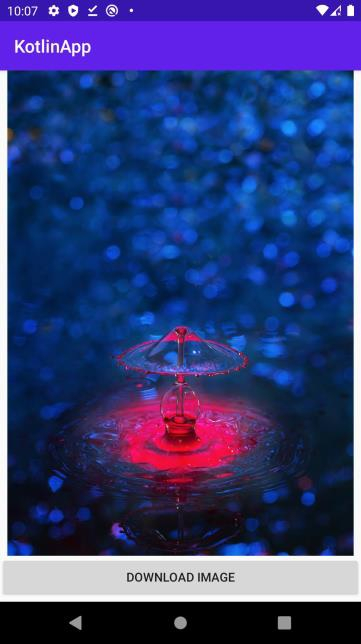How to use Android Picasso library to download images using Kotlin?
https://www.tutorialspoint.com/how-to-use-android-picasso-library-to-download-images-using-kotlin
-
02-10-2020 - |
Question
How to use Android Picasso library to download images using Kotlin?
This example demonstrates how to use Android Picasso library to download images using Kotlin.
Step 1 − Create a new project in Android Studio, go to File ⇒ New Project and fill all required details to create a new project.
Add the following dependency to the build gradle (Module: app)
implementation 'com.squareup.picasso:picasso:2.4.0'
Step 2 − Add the following code to res/layout/activity_main.xml.
<?xml version="1.0" encoding="utf-8"?> <RelativeLayout xmlns:android="http://schemas.android.com/apk/res/android" xmlns:tools="http://schemas.android.com/tools" android:layout_width="match_parent" android:layout_height="match_parent" android:paddingBottom="4dp" tools:context=".MainActivity"> <ImageView android:id="@+id/imageView" android:layout_width="match_parent" android:layout_height="match_parent" android:layout_above="@id/btnDownload" /> <Button android:id="@+id/btnDownload" android:layout_width="match_parent" android:layout_height="wrap_content" android:layout_alignParentBottom="true" android:text="Download Image" android:textAlignment="center" /> </RelativeLayout>
Step 3 − Add the following code to src/MainActivity.kt
import android.os.Bundle
import android.widget.Button
import android.widget.ImageView
import androidx.appcompat.app.AppCompatActivity
import com.squareup.picasso.Picasso
class MainActivity : AppCompatActivity() {
lateinit var imageView: ImageView
lateinit var btnDownload: Button
override fun onCreate(savedInstanceState: Bundle?) {
super.onCreate(savedInstanceState)
setContentView(R.layout.activity_main)
title = "KotlinApp"
imageView = findViewById(R.id.imageView)
btnDownload = findViewById(R.id.btnDownload)
btnDownload.setOnClickListener {
Picasso.with(this) .load("https://images.unsplash.com/photo-1555083892-97490c72c90c? ixlib=rb-1.2.1&w=1000&q=80") .into(imageView);
}
}
}Step 4 − Add the following code to androidManifest.xml
<?xml version="1.0" encoding="utf-8"?> <manifest xmlns:android="http://schemas.android.com/apk/res/android" package="com.example.q11"> <uses-permission android:name="android.permission.INTERNET" /> <application android:allowBackup="true" android:icon="@mipmap/ic_launcher" android:label="@string/app_name" android:roundIcon="@mipmap/ic_launcher_round" android:supportsRtl="true" android:theme="@style/AppTheme"> <activity android:name=".MainActivity"> <intent-filter> <action android:name="android.intent.action.MAIN" /> <category android:name="android.intent.category.LAUNCHER" /> </intent-filter> </activity> </application> </manifest>
Let's try to run your application. I assume you have connected your actual Android Mobile device with your computer. To run the app from android studio, open one of your project's activity files and click the Run icon ![]() from the toolbar. Select your mobile device as an option and then check your mobile device which will display your default screen.
from the toolbar. Select your mobile device as an option and then check your mobile device which will display your default screen.

Click here to download the project code.
